Beware the Great Grey Shrike: The pretty songbird with the temperament of Vlad the Impaler
Simon Lester takes a look at the great grey shrike, a delicate-looking songbird whose innocent appearance belies its sadistic tendencies – for this is a bird gruesomely adept at skewering its prey on thorns.
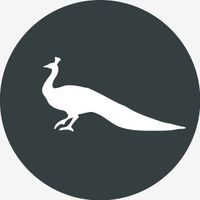

With the dashing good looks of a dandy highwayman and the mentality of Vlad the Impaler, the great grey shrike sports a black, bandit-style eye mask reminiscent of medieval executioners so as not to be recognised for committing one of the most dastardly deeds in Nature – the impaling of its prey on thorns to make a grizzly cache.
A striking bird, just 9½in in length, with a stocky body and a long tail, Lanius excubitor is a rare winter visitor and the largest of the European family of shrikes, with no more than 200 gracing our shores each year.
First appearing on the east coast in September, the fiercely territorial nature of these silvery-grey birds means they cut solitary figures in their winter haunts, before departing for Scandinavian breeding grounds in spring.
Although their livery – a pale-grey back and snow-white underparts, with a black tail and wing – is distinctive, giving rise to the nickname ‘murdering pie’, the male and female are almost identical.
Yet few people have seen shrikes in the flesh. Indeed, in more than 40 years as a gamekeeper, I’ve only ever seen one. One day, when I was working on Langholm Moor in Dumfriesshire, some birdwatchers gathered in a layby on the hill road revealed with great excitement that a great grey shrike had arrived. Looking through my binoculars in the direction pointed out by a battery of scopes, I enjoyed my first glimpse of ‘the butcher bird’.
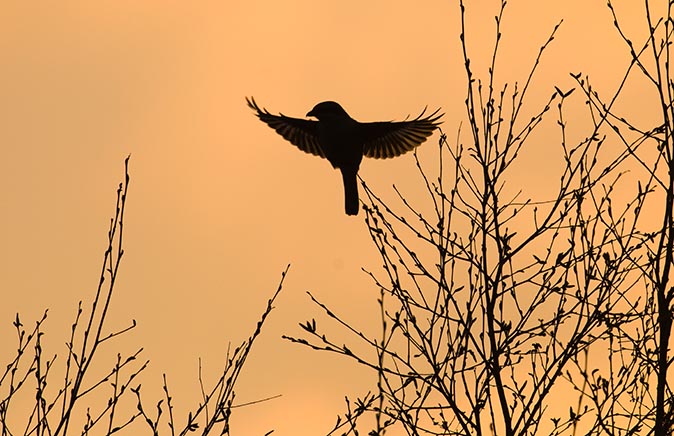
Over the years, there’s been confusion as to which family this sinister bird belongs to and whether it’s a corvid or a bird of prey. In fact, it’s a songbird, albeit with a powerful hooked bill and violent, carnivorous tendencies.
That the first part of its Latin name, Lanius, means butcher could not be more apt, because, after chasing down a small bird or dropping on a vole or lizard, the shrike beats its victim to death with its inch-long beak.
Exquisite houses, the beauty of Nature, and how to get the most from your life, straight to your inbox.
“These masked assassins sometimes sing another bird’s song to lure unsuspecting victims into a deceitful ambush”
However, because it’s a passerine, the shrike’s feet are too weak to hold the morsel while it’s being ripped apart, so it finds a secure anchorage, such as a blackthorn or a handy barbed-wire fence, to assist with the dismembering process.
It’s morbidly fascinating that, over time, the great grey shrike has perfected its butchery skills to the point where it can remove the poisonous skin of a toad so as to make a meal of a creature that is off the menu to most predators.
Often spotted on a vantage point, the bird is the lone hunter, the watcher, the sentinel (excubitor); always alert, not only for its prey, but also for birds of prey, upon sight of which it emits an alarm call similar to the shriek of a jay. Indeed, shrike is thought to be a derivative of shriek, hence the bird’s name.
To enable them to catch their varied prey – from insects to voles and thrushes – they also hover and actively beat and hunt through cover. Cunningly, these masked assassins sometimes sing another bird’s song to lure unsuspecting victims into a deceitful ambush.
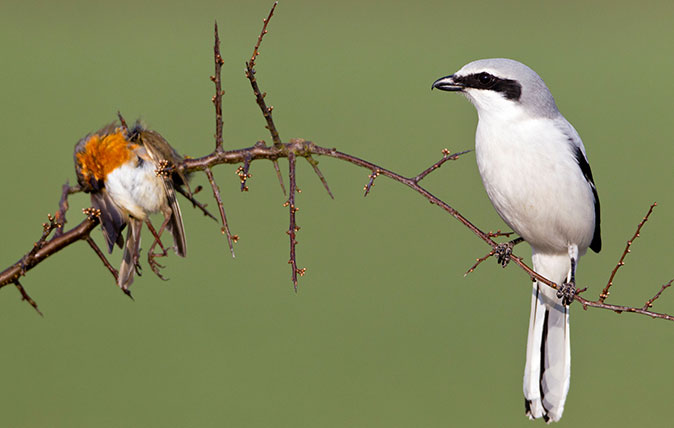
Given its macabre habits, it’s not surprising that this bird has amassed hundreds of folk names that evoke violence and dread – such as the Germanic ‘choking angel’ – across its European haunts.
In Scotland, however, the bird enjoys the more jovial sobriquet of White Whisky John, due to its slightly erratic, tipsy flight, which reveals its white underparts.
The first known illustration of a great grey shrike appears in the Sherborne Missal, an illuminated medieval manuscript from the 1400s. Later, the ‘waryangle’ (little villain or winter angel) is mentioned in Geoffrey Chaucer’s Friar’s Tale ‘as ful of venym been thise waryangles’ and it was once believed that the thorns the shrike impales its victims on remained poisonous forever.
In Sylvia Plath’s poem The Shrike, the wife takes on the role of the butchering shrike, ‘she must wait in rage/Until bird-racketing dawn/When her shrike-face/Leans to peck open those locked lids, to eat/Crowns, palace, all’.
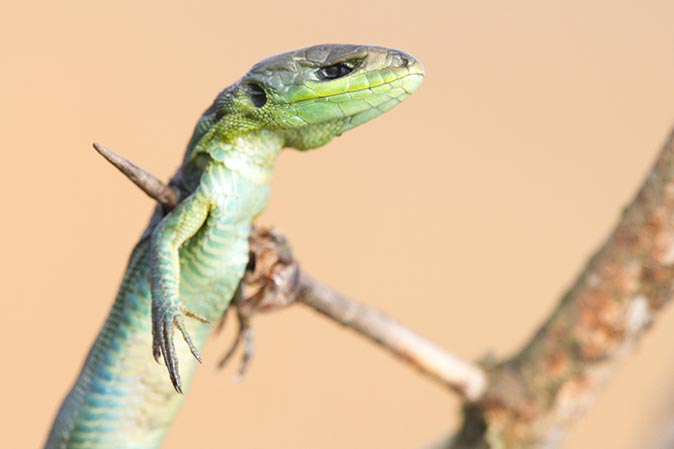
When my children were growing up, my youngest daughter was traumatised when the family of field mice in the jolly, televised cartoon version of Farthing Wood were skewered onto a thornbush by a red-backed shrike. Lanius collurio is slightly smaller than its great grey cousin, but possesses the same menacing habits. Furthermore, although both species are declining in range and numbers, the red-backed shrike – which used to breed here and now visits just as the great grey is leaving – is virtually extinct as a UK breeding bird.
On reflection, it’s strange how the attractive and dexterous great grey shrike has evolved into a figure of horror because it spears its prey to help it to eat, when the song thrush – another bird that sits in solitude at the top of a tree and sings its heart out, but batters snails to bits on a rock – gets away with blue murder.
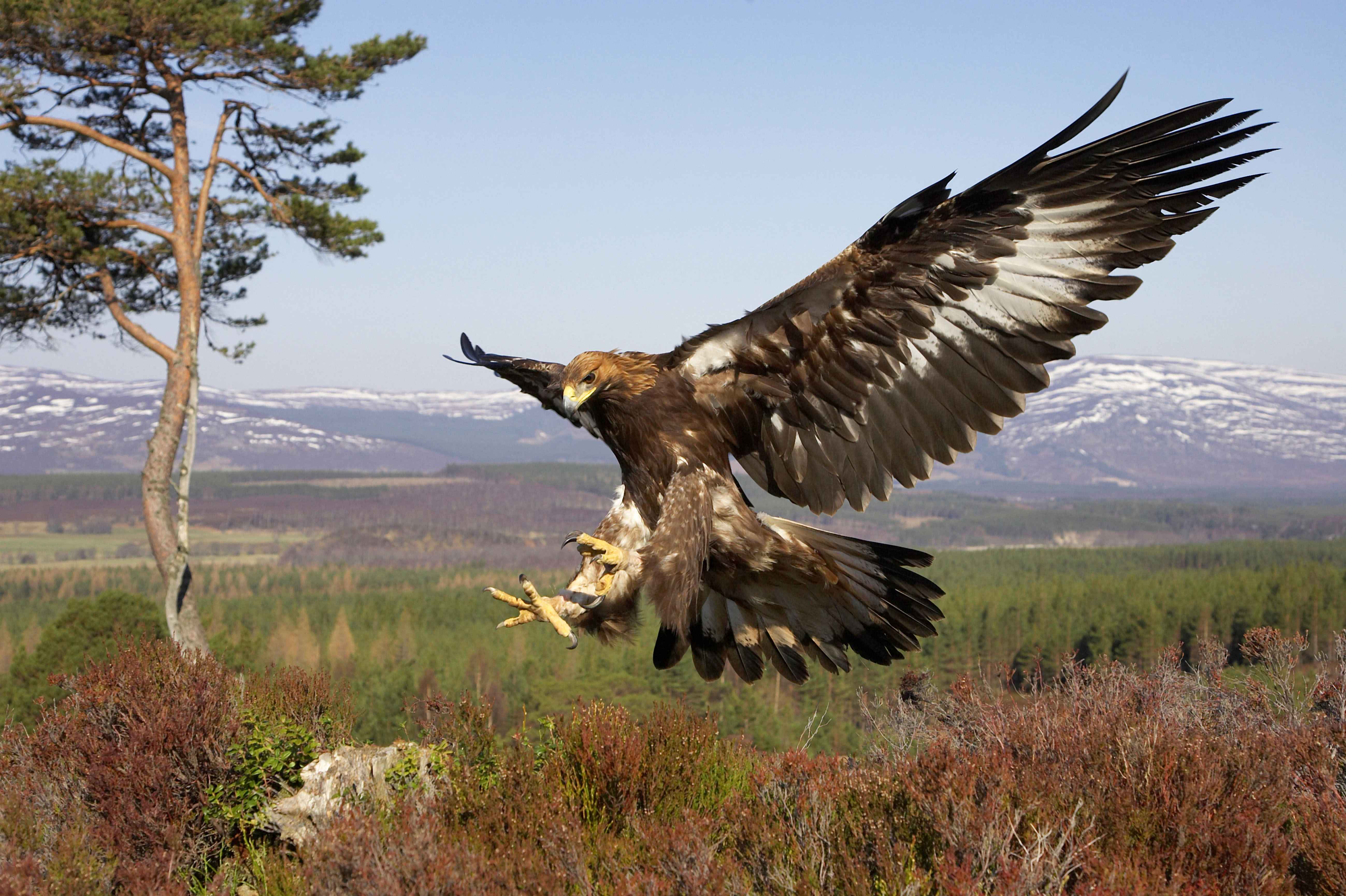
Britain’s birds of prey: The Country Life guide to all of the UK’s raptors
Raptors’ supersonic vision, effortless aerial acrobatics and ruthless hunting instinct make them the undisputed masters of the skies, but can

Credit: Caters
Dormice: Britain’s sleepiest, and most charming little creatures
David Profumo takes a look at the lovely little dormouse – a delightful little creature which spends 75 per cent

Credit: John Glover / Alamy
From golden autumn sunlight to stunning Roman Baths: Country Life’s 10 best Instagram posts of 2017
We're taking a look back at the most popular Instagram posts of the year, where a mixture of beautiful houses,

Credit: Alamy
Hibernation: The animal phenomenon that might just save the human race
For centuries, naturalists pondered how a warm-blooded creature could descend into a near-death winter state and surface unscathed the following
Country Life is unlike any other magazine: the only glossy weekly on the newsstand and the only magazine that has been guest-edited by His Majesty The King not once, but twice. It is a celebration of modern rural life and all its diverse joys and pleasures — that was first published in Queen Victoria's Diamond Jubilee year. Our eclectic mixture of witty and informative content — from the most up-to-date property news and commentary and a coveted glimpse inside some of the UK's best houses and gardens, to gardening, the arts and interior design, written by experts in their field — still cannot be found in print or online, anywhere else.
